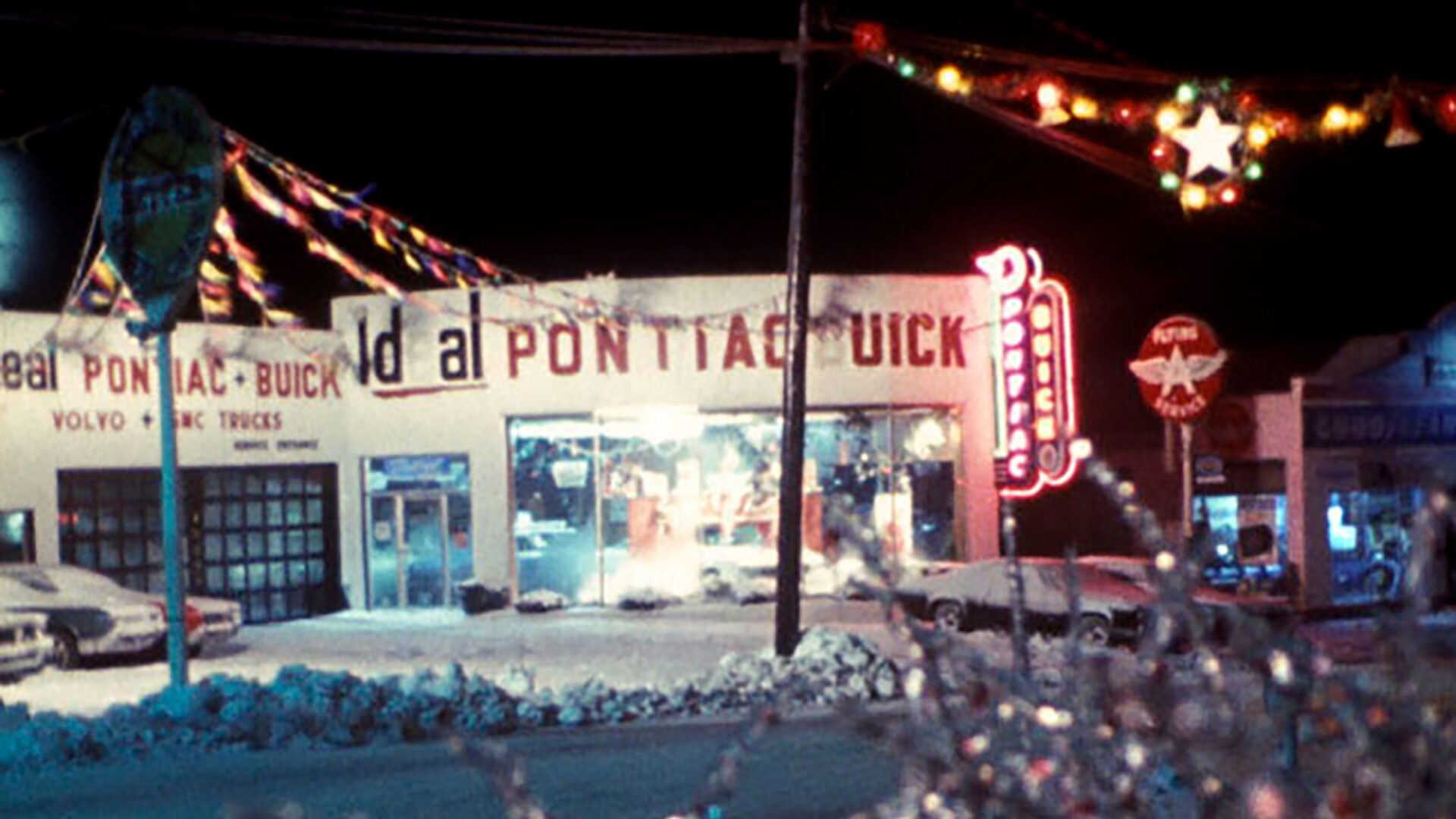December 9–16, 2024
7 Reasons Why: Nathaniel Dorsky and Jerome Hiler
“A body of work not stinting in passionate grace.”
Warren Sonbert, filmmaker (Carriage Trade, Friendly Witness)
The work of San Francisco-based filmmakers Nathaniel Dorsky and Jerome Hiler is inextricably bound up in their lives. The two met after a screening of Dorsky’s first film, Ingreen (1964), after which Hiler, a painter with a longtime interest in film, made his first single-reel work as a gift to Dorsky. For many years, films by both artists, soon to be partners in art and life, could be understood as an ongoing exchange of intimate gifts: screened in private, or at home for friends and neighbours, and never fixed in place.
Untitled and open to evolution, each silent Bolex-shot reel—of greenery, home life, and city symphony abstraction—could find itself in a new alternating order each screening. The immediacy of avant-garde inspiration and the long, patient study of editing with no preconceived outcome meant that Dorsky and Hiler, each of them carrying a streak of autodidacticism, would only settle once they found a film language they could call their own.
Rigorous with each others’ work, the two filmmakers didn’t arrive at a satisfying form for over a decade. Dorsky’s longest and arguably greatest film, Hours for Jerome, made of footage shot beginning in 1966, was not completed until 1982. It was a breakthrough for Dorsky, one that came together on the other side of a long depression. “I was almost afraid of the footage,” he later wrote, “because it seemed that it came from the simplicity of my heart, from a simple attempt to show very sincere things.” Hiler’s films would enter circulation for public screenings even later, the large part of his work emerging in the 2010s.
The filtered, coloured light and compressed formal significance of stained glass is emblematic of Hiler; the vigorous Kodachrome glow applied to natural life is Dorsky’s signature. But the two are not overly precious about what they’ve captured. The beauty of their work is contained by a formal system of complex yet intuitive order. The films in this program create associational links between what Dorsky terms “grandparent shots” (that is, not shots that are back-to-back, but at a remove of one or more). Films like Hours for Jerome reward attentive viewing by creating film-specific variations on the idea of slant rhyme, which summon the kind of half-memory or surge of emotion that inspired the works in the first place.
Dorsky’s work was last exhibited at The Cinematheque in a program in 2010. Hiler’s films have never before screened in Vancouver. We are excited to offer a rare opportunity to see these 16mm films, which will be projected, as intended, at the silent speed of 18 frames per second.
“Not since Bruce Baillie made his strongest films in the ’60s has a filmmaker crammed beauty upon beauty into his work with such Keatsian lushness.” P. Adams Sitney, Artforum
“If Hiler is Monet, Dorsky is Sisley.” Klaus Wyborny, filmmaker and cofounder of Hamburg Filmmakers’ Co-op
“[My] advice to the filmmakers out there: Watch Nathaniel Dorsky’s films. Hope to make films like Nathaniel Dorsky. Know you never will.” Pablo Marín, lecturer at Schule Friedl Kubelka
“Dorsky never films anything exactly the same way twice … To watch nearly any Dorsky film is to be guided through a pattern of hushed, suspended, illuminated visions.” Max Nelson, Film Comment
Acknowledgments
Acknowledgements to Jonathan Marlow, PARACME, whose curation of Dorsky and Hiler’s films at NWFF earlier this year inspired the selections in this program. Thanks also to Brett Kashmere, Canyon Cinema, and Ron Lacheur, VIFF, for making this program possible.
List of Programmed Films
| Date | Film Title | Director(s) | Year | Country |
|---|---|---|---|---|
| 2024-Dec | Dorsky & Hiler: Program One | |||
| 2024-Dec | Dorsky & Hiler: Program Two |
